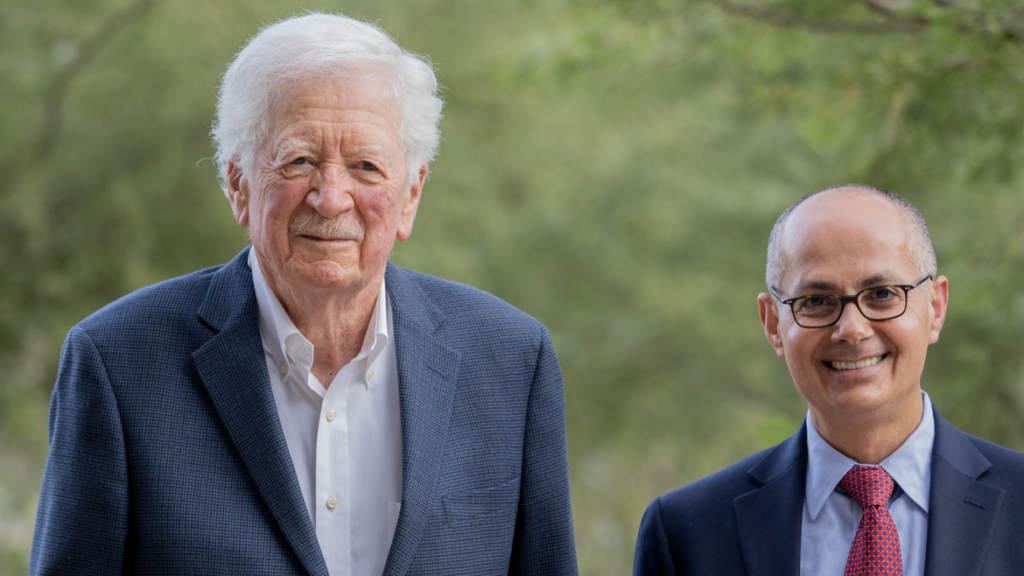From humble beginnings in the labs of ASU to a new field of reticular chemistry
It’s a tale told time and time again.
Throughout the extraordinary advancements and achievements of human civilizations, the better that we can manipulate new materials, the better our lives have gotten. Think of ancient epochs names for materials, such as the Stone Age or the Bronze Age — all the way through to the plastics and silicon fueling the digital revolution of our current age.
But what if the next tale had its origins right here at Arizona State University?
It could, if one of the co-inventors of a new field has their final say. The field — reticular chemistry — invented in the 1990s at ASU, is now sparking a slew of discoveries to solve major problems around the world today. If truly successful, the 21st century may very well become known as the “Reticular Age.”
Recently, the co-inventors of reticular chemistry gathered to recall the events that led to their achievements.
The main event
The occasion for the gathering was the inaugural School of Molecular Sciences Michael O’Keeffe Lecture Series.
And no one was more fitting to kick off the lecture series than former ASU faculty member Professor Omar Yaghi (now at UC Berkeley), who together with ASU Professor Emeritus Michael O’Keeffe made their 1990s breakthrough discoveries on reticular chemistry — from humble beginnings in a Goldwater Building basement lab at ASU.
“This is an event we’ve been trying to put on for over a year,” said lecture emcee Ian Gould, a President’s Professor in the School of Molecular Sciences at ASU.
“The purpose of this was to introduce a new event for the school. This event I believe is an important one, both for the scientific culture of the school and also to recognize the contributions of one of its most important members. Mike is one of the best but most humble scientists I think I’ve met. Based on their groundbreaking discoveries, the true excitement is that society is just now beginning to see the innovative applications based on their work,” Buseck said.
For example, their successes could pave the way to move from a fossil fuel-driven economy to a hydrogen economy by the more efficient storage of gases, help us harvest more water for a thirsty world, or even remove excess carbon from Earth’s atmosphere.
“It’s a real pleasure to be here on many, many levels, not the least of which is to speak on behalf of Michael O’Keeffe and my collaborations with him in inventing a new branch of chemistry,” said Yaghi, who gave his first in-person lecture since the pandemic, titled “Reticular Chemistry and Materials for Water Harvesting from Air Anytime, Anywhere.”
Over the course of the lecture, Yaghi traced back the key moments of discovery, and the past, present and future of the reticular chemistry field he and O’Keeffe helped establish.



